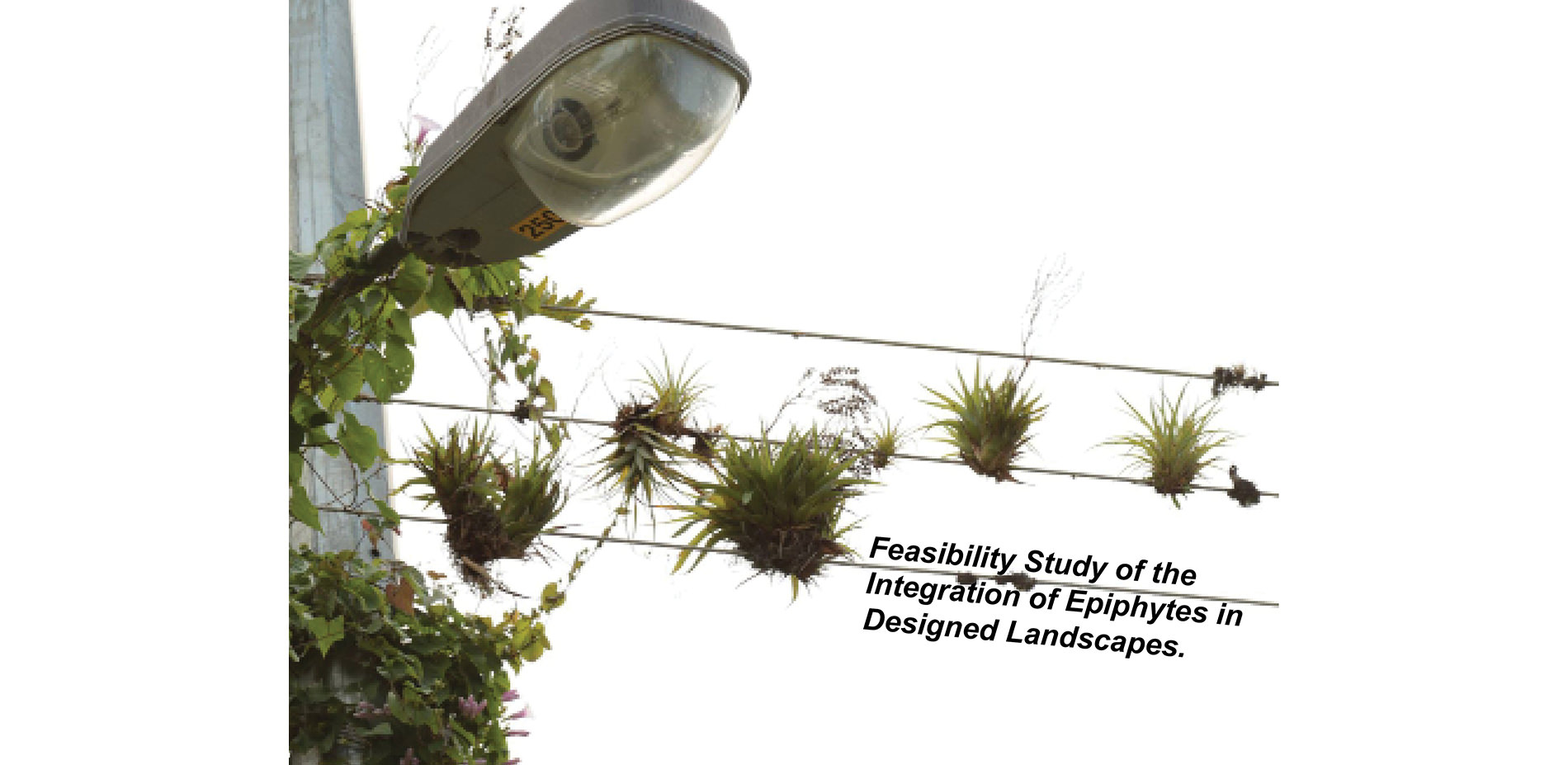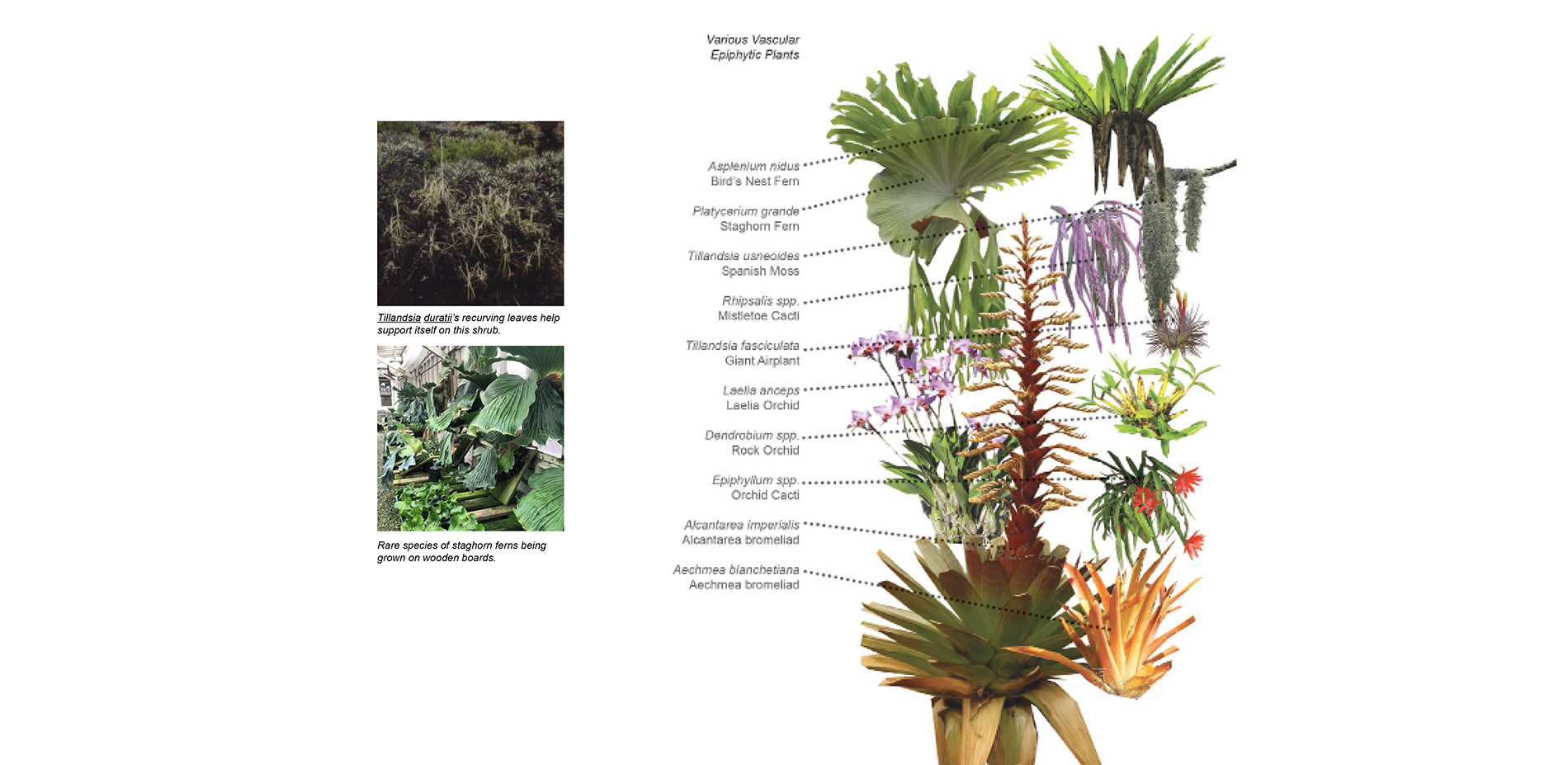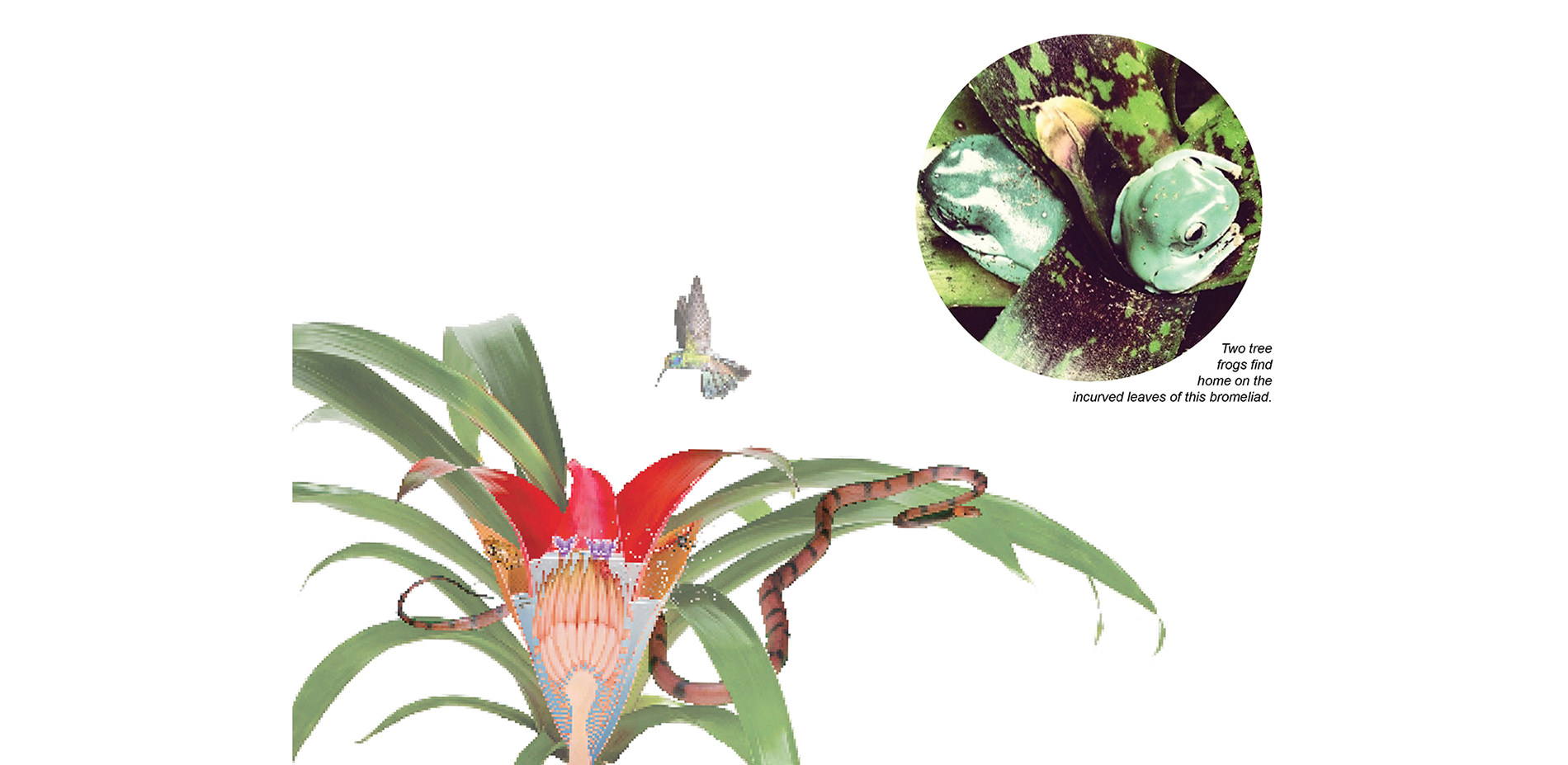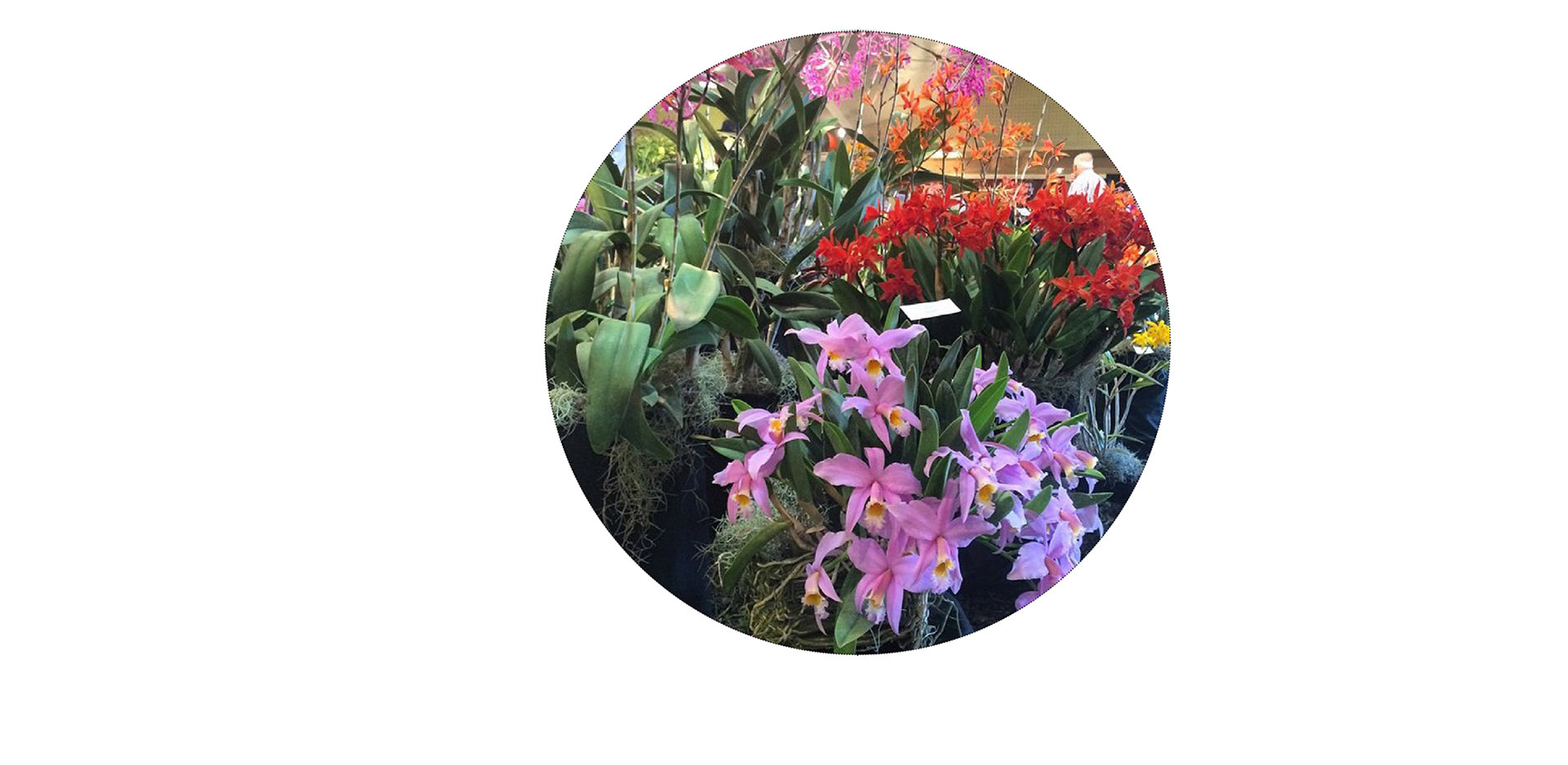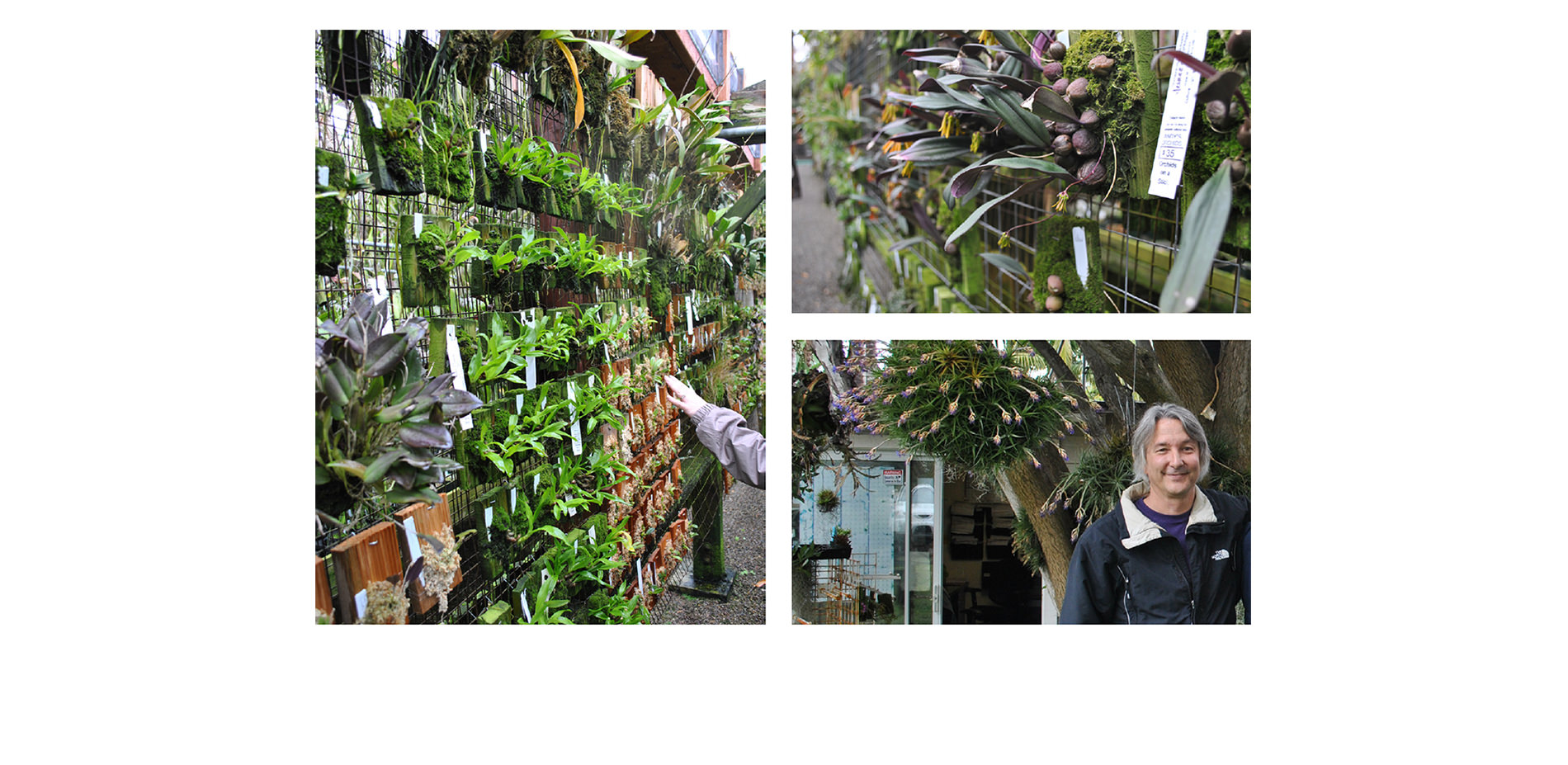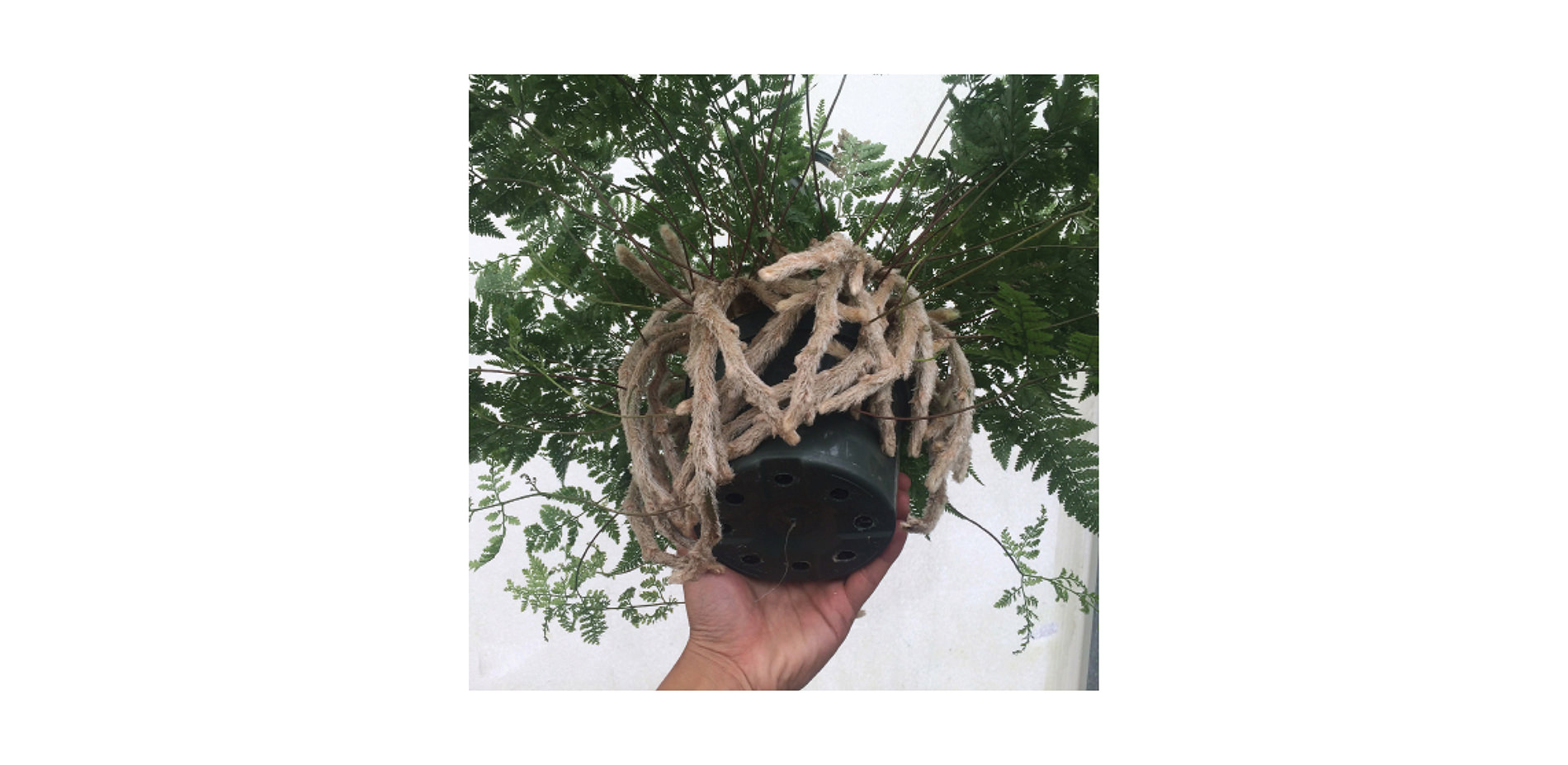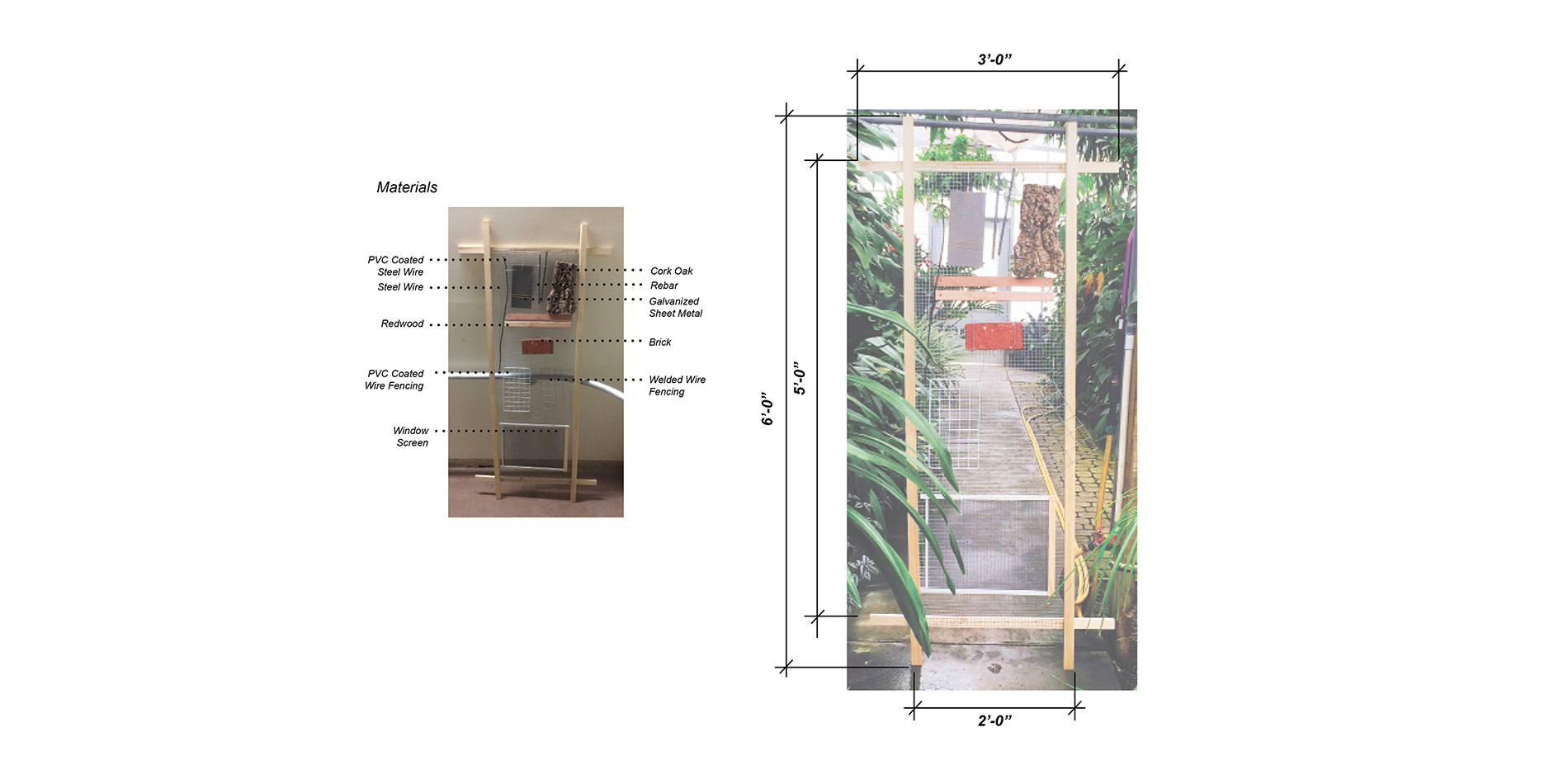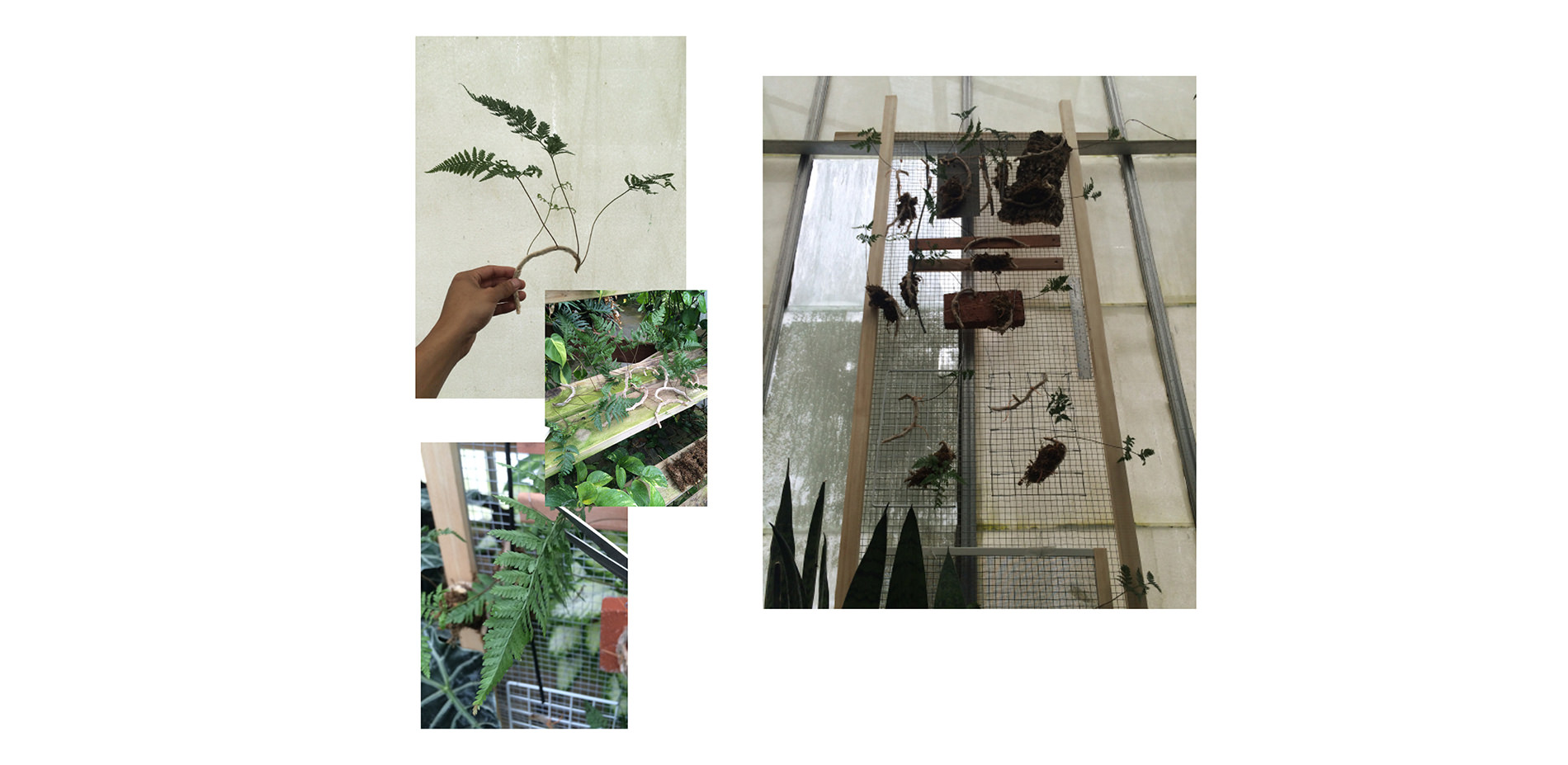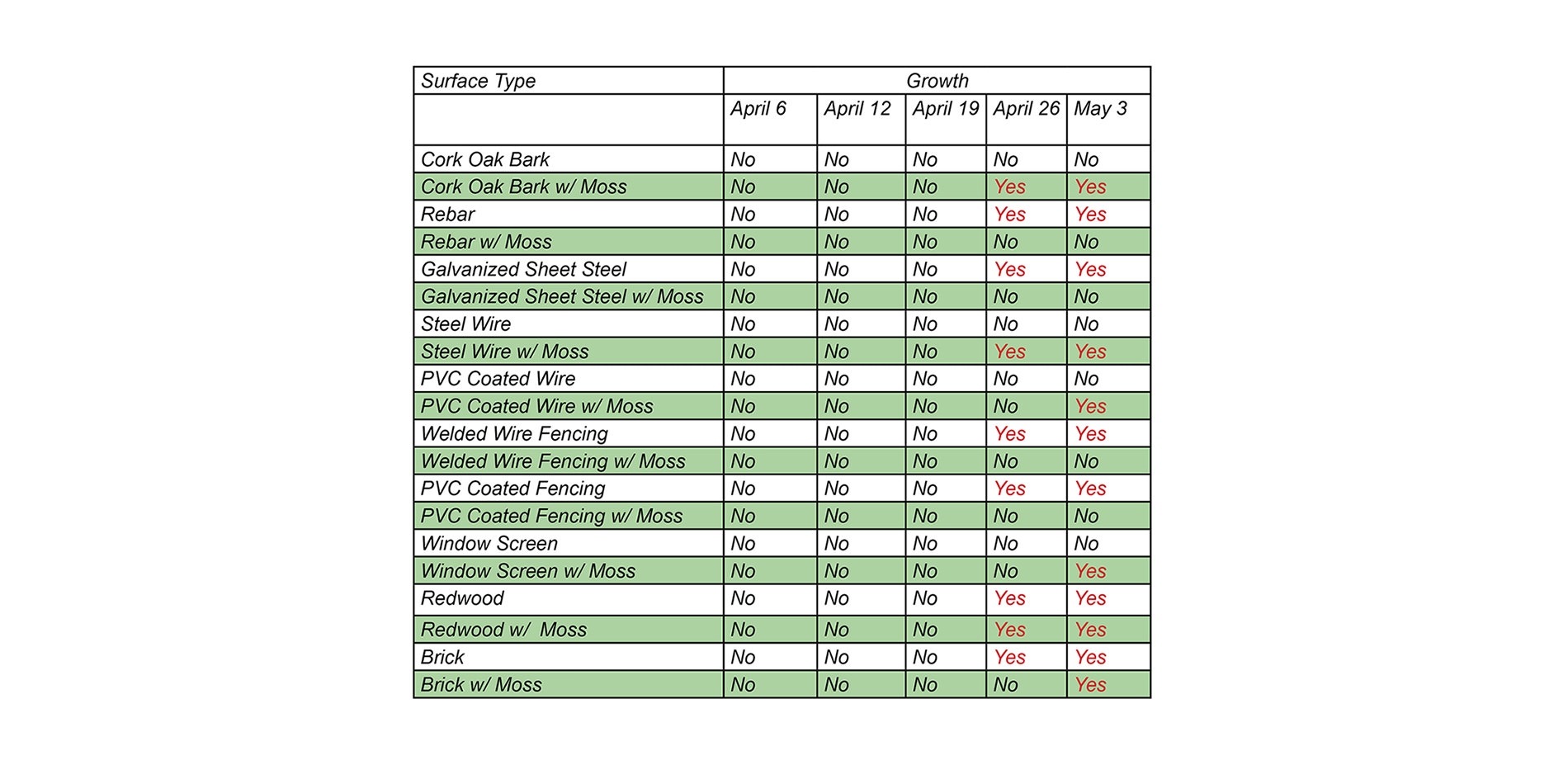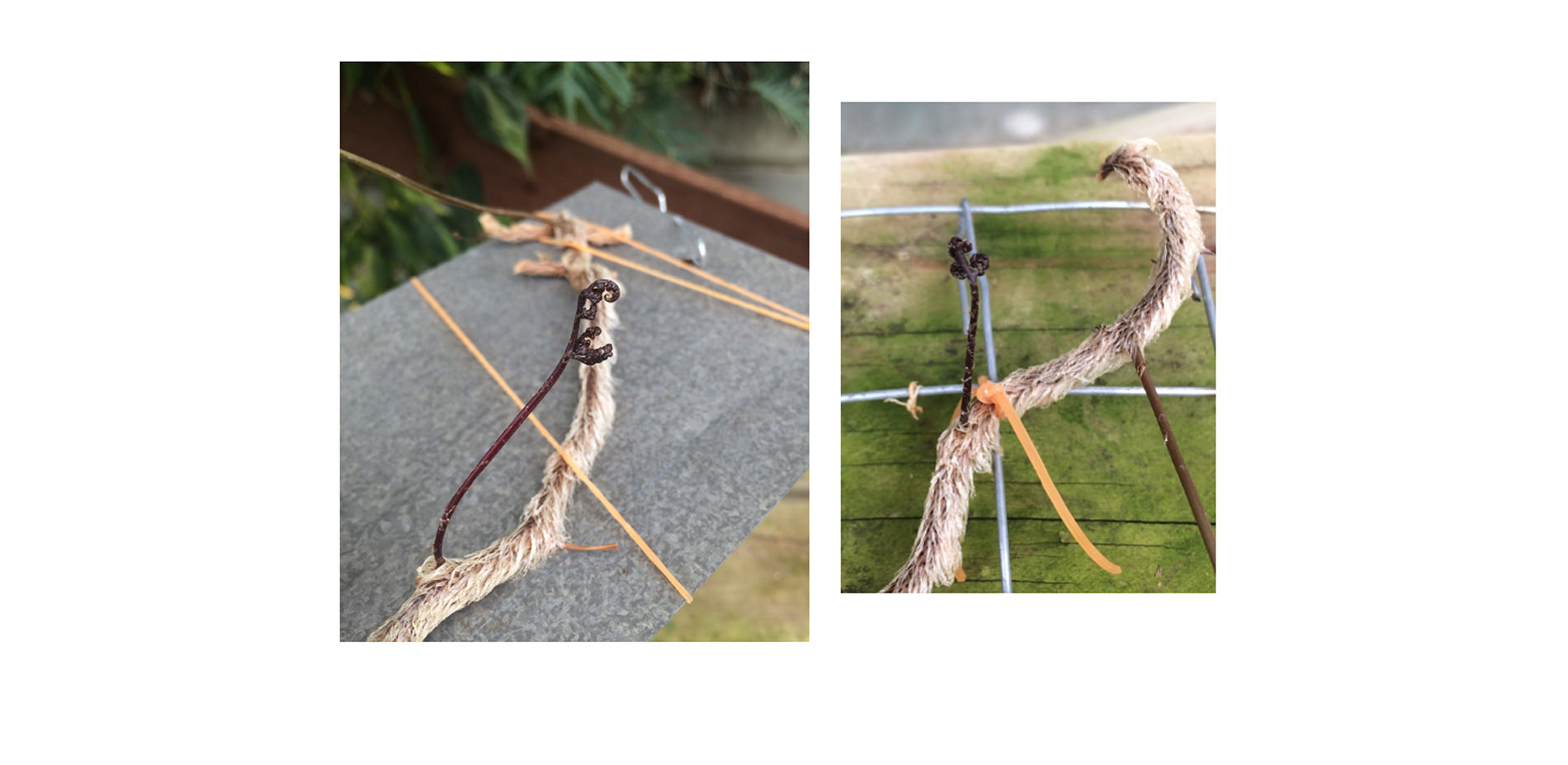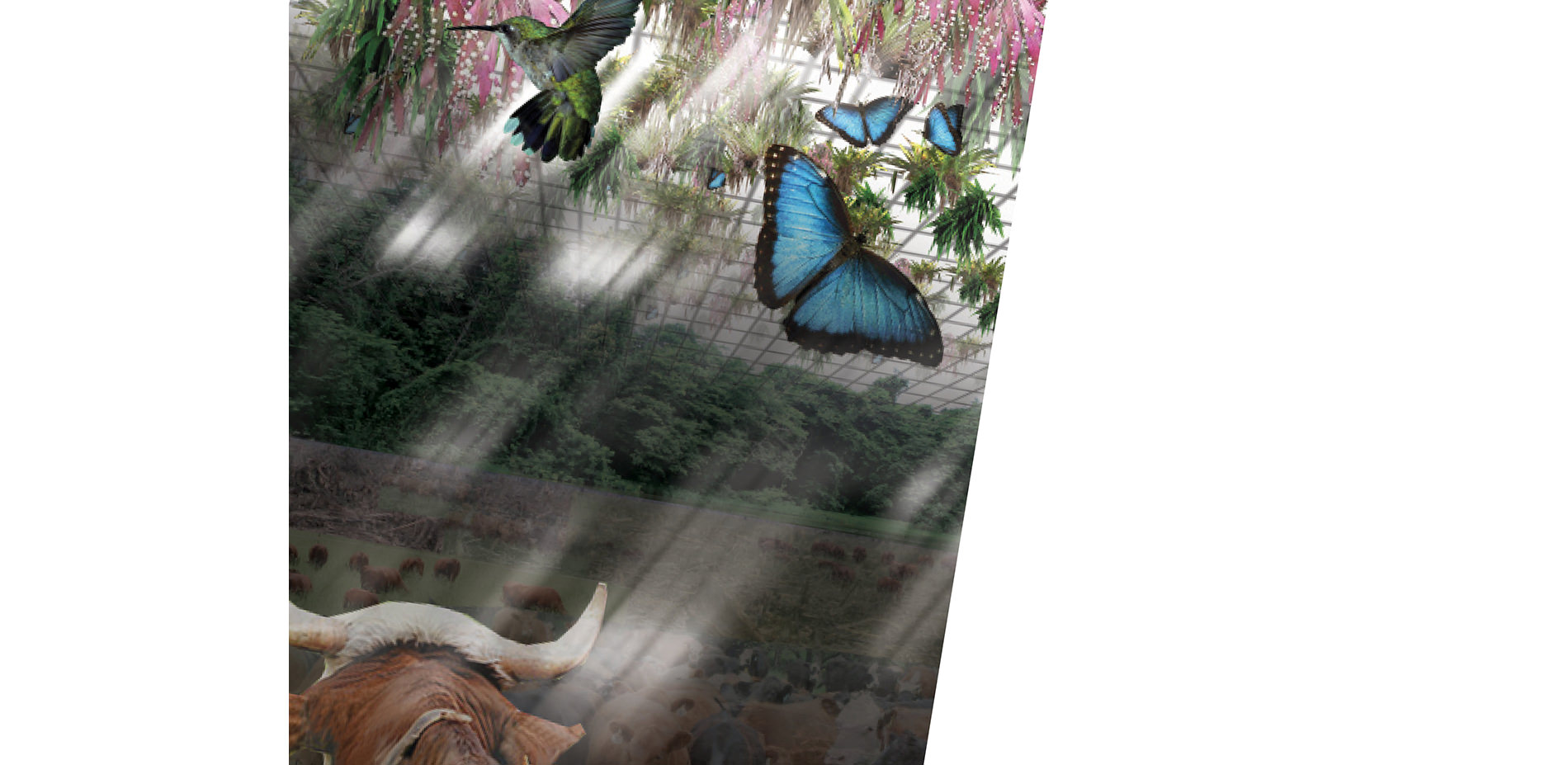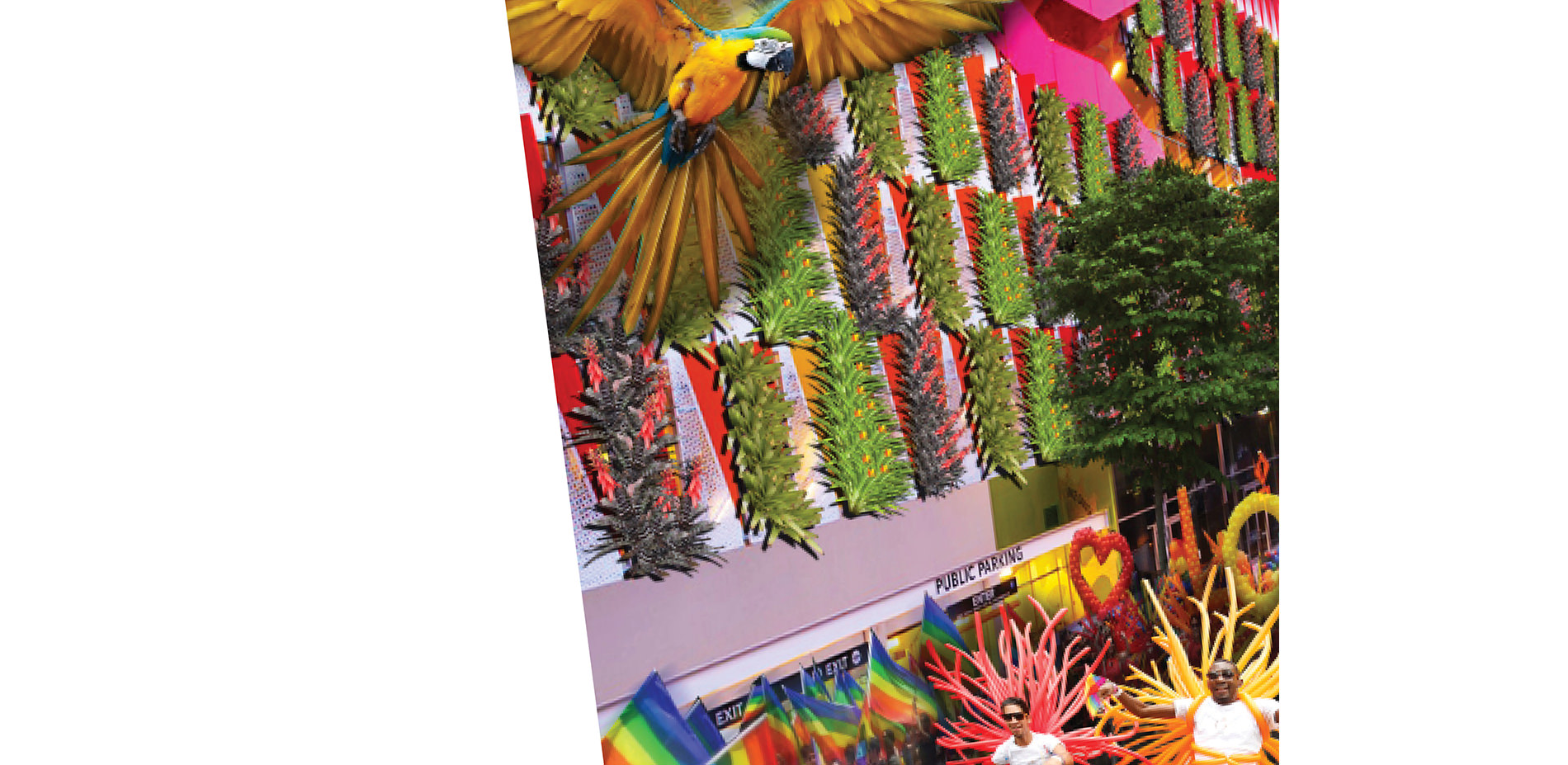PROJECT NARRATIVE
Project Intro
Epiphytes are a unique life form, which naturally thrives in an aerial environment, typically on the bark of trees (the natural hosts of epiphytes), yet can adapt to the necessary forms of human infrastructure. Work by Patrick Weygoldt, captures an instance where human infrastructure, in the form of telephone wires, hosts epiphytic plants, providing evidence for their potential inclusion in the built environment. The notable Oyster-tecture project, organized by SCAPE Landscape Architecture PLLC., challenged the “domain of landscape design” when it envisioned a polluted canal as “seedling ground” for an oyster reef (Orff 2015). As the Oyster-tecture project redirected our focus from land to sea, this project’s redirection, from land to air, is of similar nature. Like oysters encrusting surfaces within marine environments, epiphytes encrust surfaces within aerial environments. They are capable of this because, in their natural habitats, epiphytes obtain “all essential elements and water from the air” (Shacklette 1973). This unique ability offers great potential for landscape architects as they design areas where soil or soil-like media have limited spatial footprints. The best way to harness the qualities of epiphytic plants is their utilization in designed landscapes.
A study relating native epiphytic plants to urban areas in Singapore reveals the “viability of urban areas as repositories for biodiversity” (Izzuddin 2015). As climate changes and natural environments decline, urban areas become important to the maintenance of biodiversity. Similarly, to a botanical garden which preserves a biodiverse selection of plants, designed and maintained urban landscapes are opportunities for species preservation. An understanding of epiphyte ecology by landscape architects is necessary for the advancement of their contextualization within the design process.
Project Synopsis
The project consists of two parts: a literature review communicating epiphytic plant ecology and culture, and an experiment testing the growth of rabbit’s foot fern cuttings while attached to various hardscape materials.
Literature Review
A review of literature regarding epiphytic plants additionally summarizes landscape-associated relationships between and epiphytes and the atmosphere, climate change, biodiversity, and trees.
A study regarding epiphytes from tropical cloud montane forests reveals the ability of epiphytes to absorb water and nutrients from the atmosphere (Gotsch 2015). This creates an independent system that is able to utilize these resources that would not be immediately available to terrestrial systems. Their “important role in nutrient cycling and water cycling,” therefore, has a significant impact on regional hydrology and other forest processes (Gotsch 2015).
In a study regarding global climate change and cloud forests, global climate change was noted to impact “both the hydrology and ecology” of cloud forests, a critical habitat for a significant proportion of epiphytic life forms (Jarvis 2010). Three options are available to plants in a changing climate: the first is to “remain stationary and evolve in situ;” the second is to “track appropriate niches spatially and migrate;” the third is to “go extinct” (Zotz 2009). The northern migration of Spanish moss in the United States due to increasing temperature highlights the influential effects that global climate change has on plants (Shacklette 1973).
Roles in forest hydrology, nutrient cycles within the forest, and the facilitation of animal life in tree canopies make epiphytic plants a crucial supporter of biodiversity (Zotz 2009). Epiphytes, according to a study regarding plant diversity, “constitute an important bioindicator group of species,” indicating overall “ecosystem health and productivity” (Bartels 2012).
The significant presence of epiphytic species essentially requires the existence of host tree bark. The growth or degeneration of trees changes the dynamics of tree canopy life. For example, a change in the scale of branch surface area produces “immediate consequences for dependent [epiphytic] flora” (Zotz 2009). As branches mature, the surface area of their bark grows, increasing the habitat available to epiphytes. Consistent with relationships to biodiversity, heterogeneity of tree species is also an indicator of epiphyte diversity as “various tree species provide diverse substrates for colonization” (Bartels 2012). A diversity of trees is key to epiphyte diversity as some epiphytes have preferences for “particular host and host traits,” which enlightens the form of this project’s experiment (Bartels 2012).
Experiment Summary
The experiment will test the ability of Rabbit’s foot fern, Davallia fejeensis, to grow while attached to a variety of surfaces: cork oak bark, rebar, galvanized sheet steel, steel wire, PVC-coated wire, welded wire fencing, window screen, redwood, and brick. Growth will be defined as any increases in roots, new leaves, etc., of the plant while rubber-banded to surfaces. There are two fern cuttings attached to each surface. One trial will attach a cutting with some moss, a common practice in the propagation of many epiphytic plants onto surfaces, for the sake of increased humidity, and one trial will be attached without moss. In this experiment, the success of epiphyte establishment, measured by observed growth, would provide evidence supporting the use of epiphytic plants along with the surfaces’ ablility to host them within the landscape.
Rabbit’s foot fern, Davallia fejeensis
Rabbit’s foot fern is one of the most widely grown ferns in the horticultural trade. It is an epiphytic fern from Fiji, and is the most commercially available fern from the genus Davallia. It is noted for its fast growth rate, durability, disease and pest resistance and rhizomatous succulence. In current nursery practice, the fern is grown in soil, despite its epiphytic nature. It is reproduced mainly through its rhizomes, the fuzzy root-like appendages which give the plant its common name. The reproducibility of epiphytic plants is an important consideration because wild collection is often disruptive and damaging to ecosystems. In Latin American countries, there is a high demand for the collection of epiphytes which involves careless extraction, via the “stripping” of epiphyte-hosting branches, of individual specimens, leaving “immature plants, which are unused and often simply abandoned on the forest floor” (Acuna-Tarazona 2015). As a horticulturally easily reproducible epiphyte, Rabbit’s foot fern, would be a feasible specifiable plant for landscape projects where site conditions allow.
Limitations
Limitations of this experiment must be discussed as these factors play roles especially within the dynamic nature of landscapes. For one, this experiment occurs within a controlled greenhouse environment which does not fluctuate as nature would. Secondly, the scope of one epiphytic species provides limited evidence to assume its results for one of the most biodiverse plant groups. Thirdly, there is a timeline to this project of 28 days, which would only see initial growth of the flora. Maturity and full establishment in the landscape setting is missing from this experiment.
Results of Experiment/ Discussion:
Within the time frame of 28 days, growth on all surfaces was observed. Observations of growth, with and without moss, was only seen on galvanized sheet steel, redwood, and brick. The presence of moss did not consistently translate to growth on the different materials being tested. A reason for this inconsistency is likely due to the individual condition of the cutting. If this experiment were to utilize multiple individuals for each trial, growth across all surfaces regardless of moss is foreseeable. The growth on more than half of the individual cuttings, reveals evidence for the feasibility of rabbit’s foot fern in landscape design where site conditions permit. This experiment indicates that the species is unfastidious in its host surface preferences and would most likely be installable on a wide variety of surfaces. Despite the success of this plant on all surfaces, this may not be applicable to all other epiphytic genera and/or species. Future experiments are needed to test the alternative use of epiphytic plants in the built landscape.
